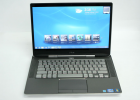Smart TV, which is now becoming the standard of TV, is getting smarter as exemplified by Samsung’s flagship TV the Smart TV ES 8000. Beyond extreme thinness and dashing good looks and Internet capability, this 55-inch LED TV further improved by incorporating motion sensor, voice activated commands, and finger swiping technology to control the TV’s functions.
Putting more intelligence into the product, Samsung has created a TV that is now on the initial stages of communicating and engaging with the viewer. Who knows what will happen next–a TV that could really talk back to you and engage you in a short conversation…hmmmm…with the Samsung Smart TV ES 8000, now that is a near possibility already.
The Samsung Smart TV isn’t your typical flat panel display as most TVs are today. When the TV got thinner, people said “Wow.” But with the transformation of the TV into something that can respond to hand gesture or recognize a face, which is what the Samsung Smart TV ES8000 is all about, the wow factor might just really shoot up the roof. These times are really exciting as Samsung just keeps on innovating on its products to prepare the way for the purely digital world experienced inside the homes.
The motion sensor technology incorporated into the Samsung Smart isn’t new. It’s kinect technology, the one that can be found on WII and Sony Playstation. Except that Samsung incorporated the camera on top of the TV to determine the viewer’s position and for that matter the viewer’s hand, which will basically control the functions of the TV. Your hand suddenly becomes a remote control of sorts and you know you’re moving things on the screen via the big cursor that moves alongside your hand movement.
The technology presented by Samsung Smart TV ES800 is still new technology and a lot of things need to be ironed out. For example, the camera doesn’t instantly recognize you as there’s a certain angle required to position yourself in front of the TV.
You can’t rely on your hand to completely navigate the widgets and menu onscreen–which is why there’s the presence of another remote device, which functions like a swiping panel for the finger to swipe contents of the screen. This remote also activates the voice function. Yes, the TV accepts voice commands, for example channel up and channel down, etc. (another wow factor).
You can also get near the TV and say “Hi TV” to activate the voice function. Doing this, you might look like an idiot talking to a TV, but hey that’s the future folks, so might as well train yourself talking to the TV. Maybe next time you’d be talking to the ref, the washing machine, so on and so forth.
The Samsung Smart TV ES8000 also recognizes faces as a means of security. You can limit Internet use of the TV by enrolling the faces of the people you allowed to have access to it. Up to seven faces can be recognized.
On the design perspective, the Samsung Smart TV ES8000 looks a lot like the LED TVs of Samsung, super skinny, weighing only half a kilogram, and featuring the almost vanishing bezel that expose much area for the display, which is high definition by the way. As the screen already hugged the areas, where’s the sound coming from? The speakers are located at the back of the TV. This is also where you can find the ports, such as USB and HDMI and other traditional TV ports.
It also has 3D conversion. Any TV show, cable or free, can be converted into 3D in addition of course to those coming from USB flash drive and blue ray player.
At first, the Samsung Smart TV ES8000 comes as a very complex and complicated TV, but the learning curve is short. You get the hang out of it in a matter of hours and watching TV is all the more fun as the TV now reacts to you and not just provide you with entertainment.
For it to be able to do all these stuff, it is fitted with a dual core CPU that handles all the multitasking, but it doesn’t save photos, you can only show them. It’s DLNA enabled so Wi-FI sharing of media files is also offered.
It’s a new technology for the TV so it’s still priced way up high at P200,000 plus.
See video below for the demonstration of how it works:










